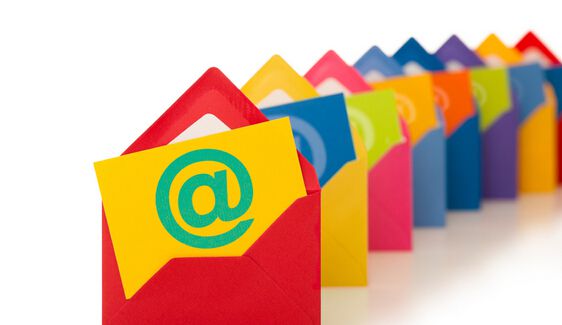老收不到回复:10招让你的邮件被秒回
|
爱思英语编者按:十万火急的邮件迟迟收不到回复是不是很恼人?对方可能事情太多没看见,也可能直接就躺到垃圾箱里了。发出去的邮件泼出去的水,既然我们控制不了,只能在写的时候多费点心了。
We're all familiar with the feeling that the emails we sent must have been sucked into some black hole because we never received a response. Sure, it's possible that your email went straight to spam, but the more likely scenario is either the recipient isn't interested or is too busy to respond. Here are some tips that may score you a reply: Check your writing. Make sure the email is free of grammar and punctuation errors. It tends to look less professional if it's rife with mistakes, which may mean your email won't be taken seriously. Stay professional but friendly. Watch the tone of your email. Make sure you keep it professional but friendly. And remember not to go overboard with the friendliness. Stay clear of emoticons, an excessive amount of exclamation marks, and capitalizing words for emphasis — you're not a used-car salesman. Keep it short. Try to be as brief as you can. If the person does not know you, she is less likely to spend time reading your email. If you keep your emails short, she's more likely to get through the whole email. Be specific. You're writing the email for a reason, so you should be clear about your goals. It's even helpful to be specific in the subject line as well, says a former Google recruiter. Using bullet points may also help you get your point across more quickly and help the reader figure out what you want. Get an introduction. If possible, try to get someone to introduce you to the person instead of emailing cold. You'll definitely raise your chances of getting a response with a referral. Scour your LinkedIn contacts to see if you have any in common with the person you're trying to reach. Make sure you check with someone when you use them as a referral. Perhaps your shared contact and the person you're trying to get in touch with have an awkward relationship. It's best not to bring up the shared contact's name if you didn't check in with them before. It could be someone's ex or someone the contact had a falling out with. This will hurt your chances of getting a response. No pressure. Do not immediately ask the contact for a referral. If the contact doesn't know you, it's a huge favor to ask of her. Instead, feel out the situation and commit some time to the contact. Ask her for advice and take her out for coffee. During your conversation, try to feel out if she's willing to refer you, or better yet, wait for her to offer. If she has voiced some discomfort about referring people, don't push it. Don't bombard. If you haven't received a response, don't keep sending multiple emails in hopes that the person will finally cave. Instead, spread your emails out and limit them. Follow up one week after the initial email, and if you still haven't heard back, send the third email two weeks later. And if no one responds to your third email, it's time to switch gears and try something else. Also, if a person says that they will get back to you if they are interested, you should probably wait for them to get back to you. Find the right person. Get the contact information of the right person to reach out to. If you email the wrong person, chances are they may not bother forwarding your email to the right contact because as a stranger, your email would be considered low priority. Limit the amount of people you reach out to. If you're trying to get in touch with someone in the organization and haven't been able to get a response, don't start emailing everyone in it. Try to limit it to at most two people. People talk, and if they find out that the same person has been emailing multiple contacts, it is not a good impression if you're trying to be professional. If the email is not working, try other means such as interacting with her on social media or meeting in person. Remember, there is a fine line between being persistent and a pest, so do your best to toe that line. |









